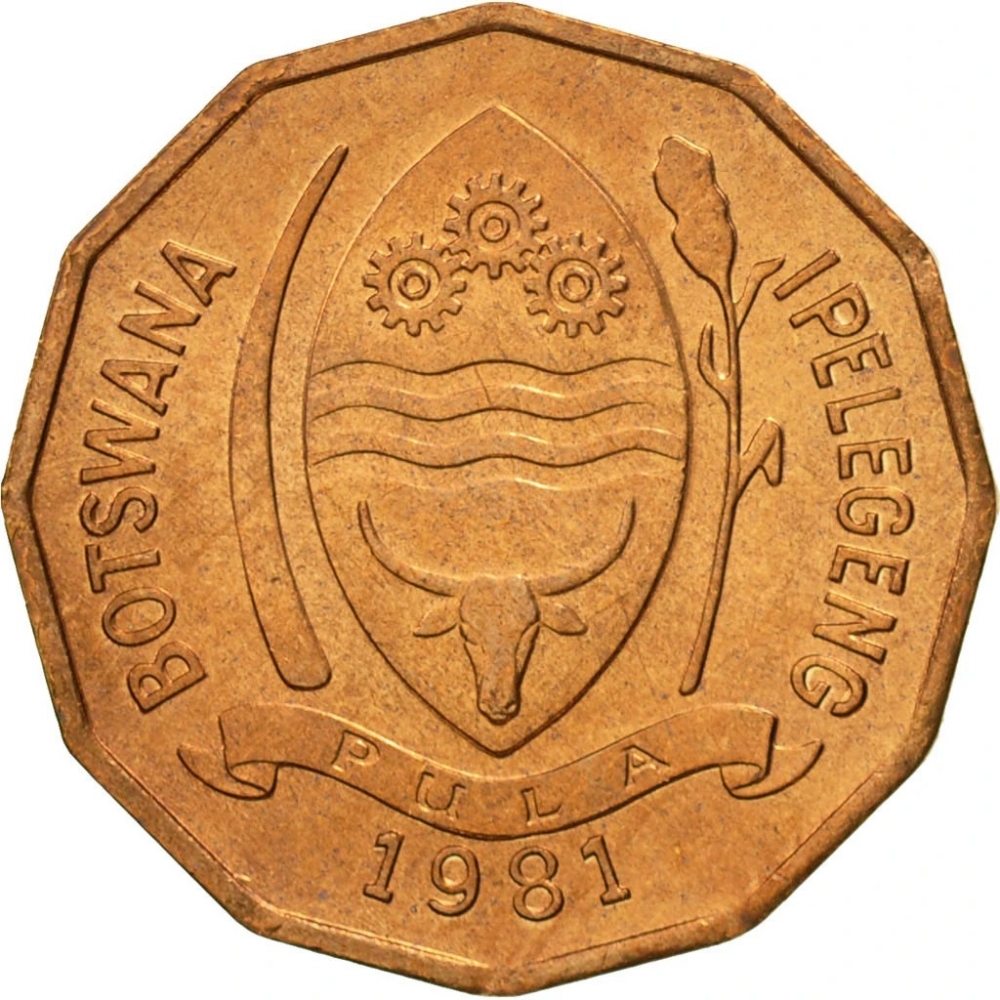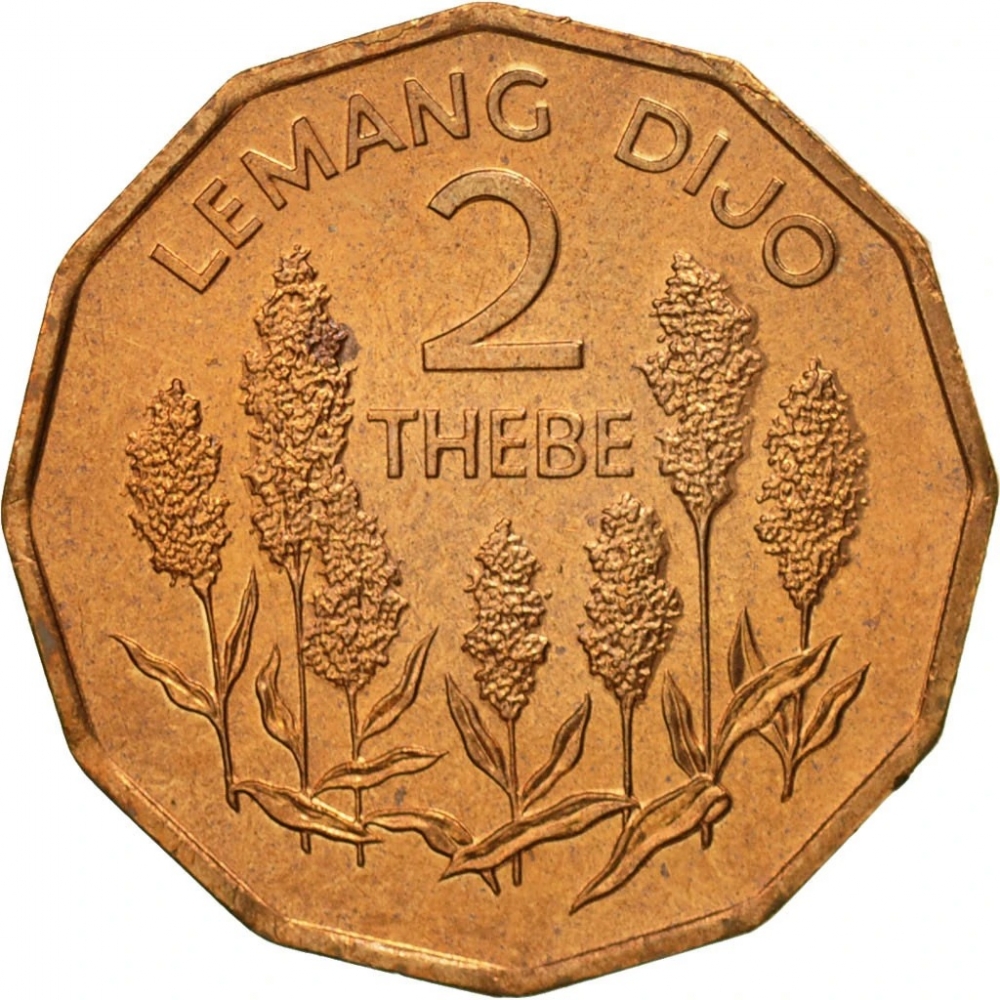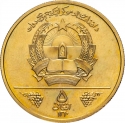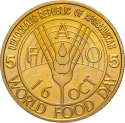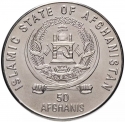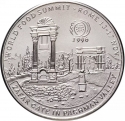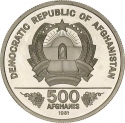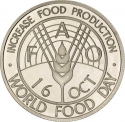You are about to finish your registration. Please check your mailbox (including spam folder). There should be a letter with a confirmation link. Check setting to make sure that your e-mail address is correct.
Send letter againDescription
Engraver: Michael Hibbit
Obverse

|
Botswana coat of arms, surrounded by the country name and the word IPELEGENG, date below. BOTSWANA IPELEGENG |
|---|---|
Reverse

|
Denomination above Sorghum bicolor. LEMANG DIJO |
| Edge |
2 Thebe
Food and Agriculture Organization (FAO)
World Food Day
Subscribe series
KM# 14 Schön# 4
Food and Agriculture Organization (FAO)
World Food Day
Related coins
Food and Agriculture Organization (FAO)
